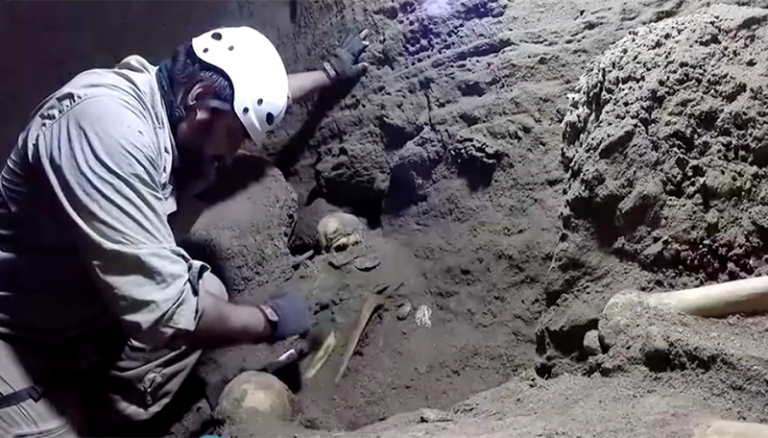
In May 2022 I wrote an Ancient Origins news article about the discovery of “42, syphilis-ridden, colonial Spaniards.” These bodies were unearthed at a 500-year-old hospital in Lima, Peru’s capital city. Now, another team of researchers have unearthed an elite noble Pre-Colonial tomb beneath a modern-day home in a working-class neighborhood in Lima.

Lima Tomb: Buried Where the Creator Was Once Worshipped
Located on Peru’s northern Pacific coast, the modern city of Lima was founded in 1535 AD by Spanish conquistador Francisco Pizarro . However, the entire region was populated as far back as the year 1100 when the Ychmas culture erected stone temples known as the Huaca Santa Ana. In these cult centers people worshipped the creator deity Pacha Kamaq , meaning the “Creator/Mover of the World.”
According to an article in Perusumag, Lima was attacked by a “horde of barbarians from the South” around 1440. These invaders were the Inca, the largest empire in pre-Columbian America, whose administrative, political and military center was in the city of Cusco. But the success of the Inca Empire depended on constant expansion through subjugation, and when they got to the area now called Lima, they named their new territory Rimaq, a Quechuan word meaning “speaker.”

The Heritage of the Elite Noble Man
Over the preceding century Quechua speaking cultures on the Peruvian coast came under Aymara influence, in which “R” was pronounced as “L.” Thus, the R was swapped for an L in this place name and Rimaq became Limaq. The Spaniards simply chopped off the “q” giving us Lima. It was around this time, 500 years ago, just before the Spanish conquest of Peru, that the recently discovered noble man was wrapped in fine cloth and buried with “ceramics and fine ornaments.”
Ministry of Culture archaeologist, Julio Abanto, told Reuters that “multiple funerary bundles were discovered wrapped тιԍнтly in cloth.” It is suspected the 500-year-old tomb contains the remains of “elites from the ‘Riricancho’ society.” The Riricancho cultural group (now Lurigancho) have origins unknown, but they settled around Pre-Hispanic Lima between 1460 AD – 1535 AD) at the time of the Inca invasions and remained until their disappearance at the end of the 17th century.

The Owner is “Overcome with Emotion”
The house in which the upper-class grave was unearthed is located in the San Juan de Lurigancho neighborhood of Lima, which is today the largest district in the country. The “San Juan” part of the name came from the Spaniards in the 1570s but the second half of the name comes from the pre-Hispanic Lurigancho culture. Peru.info says that five hundred years ago the San Juan de Lurigancho region was “a vast area of grᴀsslands crowned by hills and furrowed by the silvery waters of the Rimac River.”
The Reuters report comes with an interview with Hipolito Tica, the owner of the Lima home beneath which the ancient tomb was discovered. Tica told reporters that he had applied to make changes to his home and a compulsory archaeological survey was undertaken. When the researchers pulled Tica aside and told him of their rare discovery, he said he was “overcome with emotion.”

Ancient Lurigancho Treasures on the Rise
When it comes to Lurigancho/Riricancho tombs there is no arguing that the most spectacular belonged to Wayaw, or the Dama de El Sauce (Lady of the Willow). This 400-year-old Lurigancho woman’s skeletal remains were unearthed in 2018 in the same district of San Juan de Lurigancho. Art historian and archaeologist Pablo Aparicio revealed a virtual treasure trove of ancient secrets when he recreated the woman’s head with 3D visualization technology.
This young Riricancho woman was just under five feet tall and she had died of natural causes. But what was fascinating about this particular discovery, unlike the recently identified grave, is that the woman was ‘not’ an elite like 99% of graves discovered in Peru. It was concluded that she had lived her life as a common villager, and wear patterns of her bones, shoulders and hips determined she worked as a weaver. This meant Pablo Aparicio’s 3D reconstruction revealed how common people looked in Pre-colonial Peru, a rarity considering the vast percentage of elite burials.





